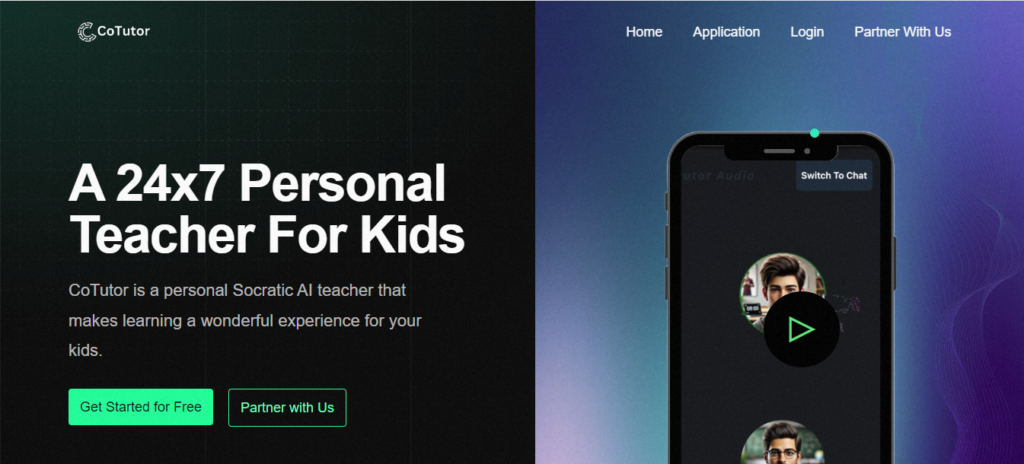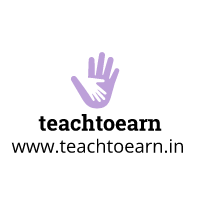In today’s fast-paced and competitive environment, every parent worries about how to give their child the best possible education. Traditional schools, while offering structure, often fail to inspire creativity and critical thinking. Many parents are searching for alternatives that provide a more personalized approach to learning, empowering children to become independent thinkers and self-directed learners.

This insightful conversation between a concerned parent and an experienced school principal explores the limitations of traditional schooling, the drawbacks of tuition classes, and alternative educational methods like homeschooling, microschooling, and the use of AI-powered tools like cotutor.tech. Whether you’re looking for new ways to help your child thrive academically or interested in fostering a lifelong love of learning, this discussion offers valuable advice on creating an educational path that suits your child’s unique needs.
Parent: Principal, I’m really concerned about my child’s education. Traditional schools seem so impersonal and expensive these days, and it feels like all they do is prepare kids to cram for exams. I’m also not a fan of tuitions—they seem to dumb down students rather than challenge them. I want to know how I can help my child become a self-directed learner. I’ve heard about homeschooling, microschooling, and online AI-powered tools like cotutor.tech, but I’m not sure how to go about it. Can you guide me?
Principal: Your concerns are shared by many parents today, and rightly so. The education system, in many cases, has become a conveyor belt of rote learning, focused more on producing exam results than nurturing genuine curiosity and independent thinking. It’s understandable that you want more for your child—more engagement, more personalized learning, and more opportunities to develop skills that will truly prepare them for the future.
The Limitations of Traditional Schooling
Principal: Let’s start by discussing traditional schooling. While schools provide structure, social interaction, and a set curriculum, they often fall short in several key areas. Many schools are burdened by large class sizes, which makes personalized attention difficult. As a result, the education becomes very standardized, and teachers are often forced to teach to the test, focusing on memorization rather than understanding. This can stifle creativity and critical thinking, leaving students disengaged and unprepared for real-world challenges.
Parent: That’s exactly what I’ve noticed. My child is bright and curious, but I feel like the school system is just teaching them how to pass exams, not how to think or solve problems.
Principal: You’re right to be concerned. The emphasis on exam preparation can lead to a shallow understanding of subjects, and students often end up learning just enough to get by, without truly grasping the concepts. This approach also leaves little room for exploring interests or developing skills that aren’t part of the standard curriculum.
The Drawbacks of Tuitions
Parent: I’ve also been hesitant about sending my child to tuitions. It seems like they just reinforce the same rote learning methods that schools use, and I’m worried it might make my child less curious and independent.
Principal: Tuitions, while they can be helpful for some students, often end up reinforcing the same issues present in traditional schooling. They typically focus on drilling students in the same content, sometimes in a more simplified manner, which can lead to what you described—dumbing down the learning process. Instead of fostering critical thinking and problem-solving skills, tuitions can create a dependency on guided learning, where students become reliant on tutors to provide answers rather than figuring things out for themselves.
Exploring Alternatives: Homeschooling and Microschooling
Principal: Given your concerns, it’s worth exploring alternative educational approaches like homeschooling and microschooling. These options offer a more personalized and flexible learning environment that can be tailored to your child’s unique needs, interests, and pace.
Parent: I’ve heard about homeschooling, but I’m not sure if I have the time or expertise to manage it. And what exactly is microschooling?
Principal: Homeschooling involves educating your child at home, where you can tailor the curriculum to fit their interests and strengths. It allows for a more hands-on and interactive learning experience, and you can incorporate a wide range of resources, from books and online courses to educational outings and projects. While it might seem daunting at first, there are many support groups and resources available to help parents navigate homeschooling, even if you don’t have a teaching background.
Microschooling, on the other hand, is a hybrid model that combines the personalized attention of homeschooling with the social interaction and resources of a traditional school. Microschools are small, community-based learning environments where a handful of students are taught by one or more educators. This model offers a more intimate and supportive learning experience, where students can receive individualized attention while still benefiting from peer interaction. Microschools often have a flexible curriculum, allowing students to explore subjects in greater depth and at their own pace.
Parent: That sounds interesting. It seems like it would allow my child to learn in a way that suits them best, without the pressure and rigidity of traditional schooling.
The Role of Online AI-Powered Tools: cotutor.tech

Principal: Absolutely, and to complement homeschooling or microschooling, you can leverage online AI-powered tools like cotutor.tech. These tools are designed to support self-directed learning by offering personalized educational experiences that adapt to your child’s learning style, pace, and interests.
Parent: How exactly does an AI-powered tool like cotutor.tech work?
Principal: Cotutor.tech, for example, uses artificial intelligence to assess your child’s strengths, weaknesses, and learning preferences. It then creates a customized learning path that focuses on their individual needs. The platform offers a variety of interactive lessons, quizzes, and projects that encourage active learning and critical thinking. What’s more, because it’s an online tool, it provides the flexibility to learn anytime, anywhere, making it an excellent resource for both homeschooling and microschooling setups.
One of the biggest advantages of using AI-powered tools is that they provide immediate feedback. This allows your child to understand mistakes, learn from them, and improve in real-time. Additionally, these tools often include features that promote independent research and exploration, encouraging your child to take ownership of their learning journey.
Parent:”It sounds like this could really help my child become more independent and confident in their learning. But will it be difficult for them to adjust to using such a tool?
Principal:Not at all. Most AI-powered tools are designed to be user-friendly and intuitive, even for young learners. They’re built to engage students through interactive content, making learning fun and motivating them to explore subjects more deeply. Over time, your child will develop digital literacy skills that are increasingly important in today’s world, while also building the confidence to tackle new challenges independently.
Encouraging Self-Directed Learning
Parent:I want my child to be self-directed in their learning, but I’m not sure how to encourage that without being too hands-off. What can I do?
Principal:”Encouraging self-directed learning is about finding the right balance between guidance and independence. Start by creating a learning environment that is rich in resources and opportunities for exploration. Provide access to books, online tools like cotutor.tech, and creative materials that inspire curiosity.
You can also involve your child in setting their own learning goals. Ask them what they’re interested in and what they’d like to learn more about. This helps them take ownership of their education and fosters a sense of responsibility for their progress.
Remember, the goal is to nurture a love of learning. Encourage your child to ask questions, seek out answers, and think critically about the information they encounter. Over time, they’ll develop the skills and mindset needed to be a self-directed learner—one who is curious, motivated, and capable of navigating the complexities of the world on their own.
Conclusion: A New Path Forward
Principal:It’s clear that traditional schooling isn’t meeting the needs of every child, especially in today’s rapidly changing world. By exploring alternatives like homeschooling, microschooling, and AI-powered tools like cotutor.tech, you can provide your child with a more personalized and empowering education. These approaches will help them develop the skills, confidence, and independence needed to thrive in a competitive environment, all while fostering a lifelong love of learning.
Parent:Thank you, Principal. This conversation has given me a lot to think about, and I’m excited to explore these options to help my child succeed.
Principal:I’m glad I could help. Remember, every child is unique, and finding the right educational path is about understanding their individual needs and potential. With the right support and resources, your child can thrive and become a confident, self-directed learner.
Ready to support your child’s learning journey? Get a fully furnished educational PC with all the peripherals for just ₹10,000. This all-in-one solution ensures that your child has the tools they need to explore, learn, and succeed. Click here to buy now or contact us through Whatsapp for more information.
